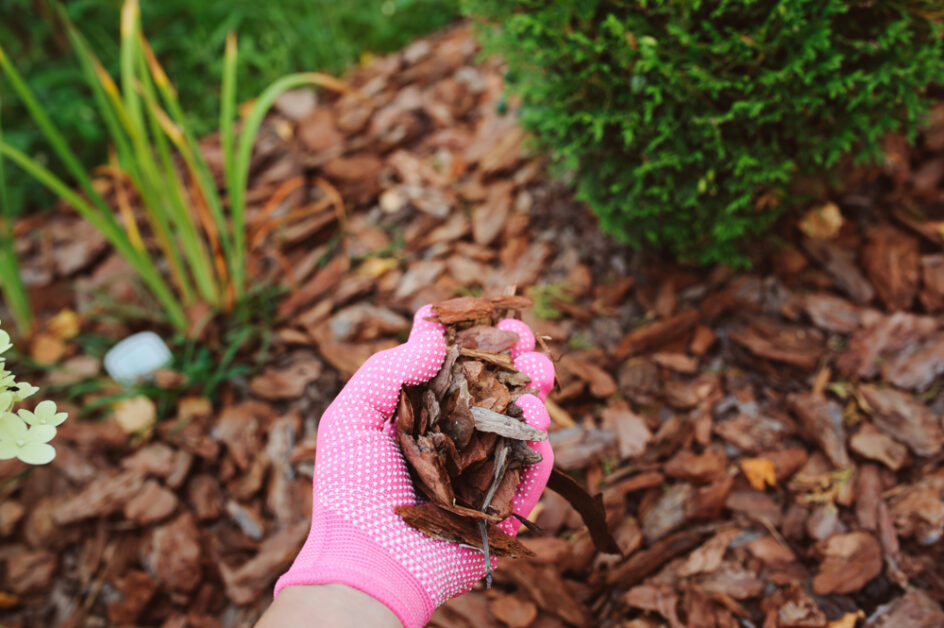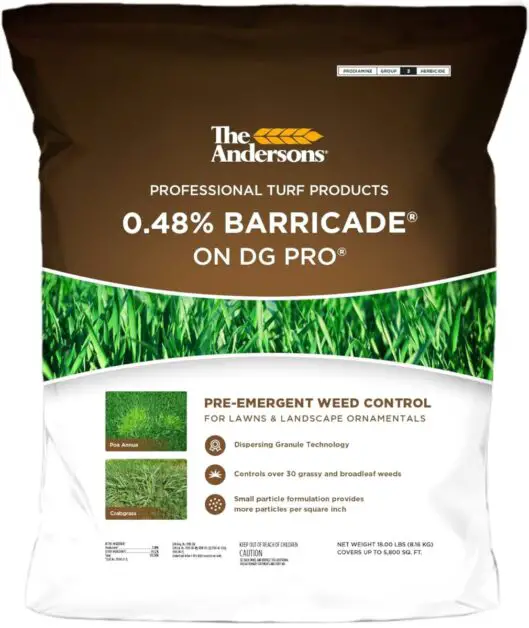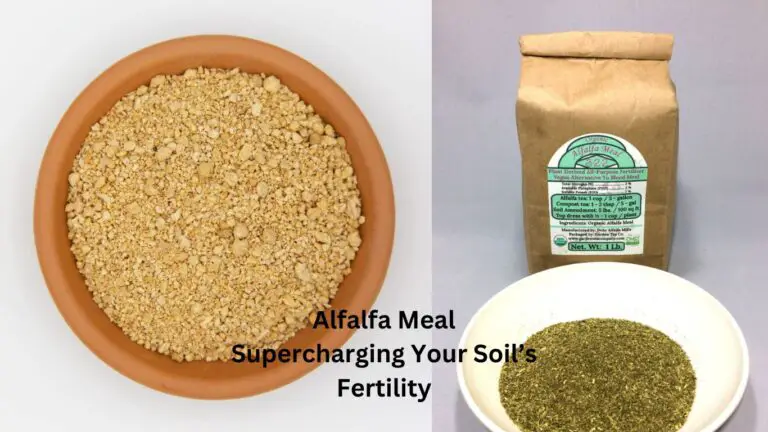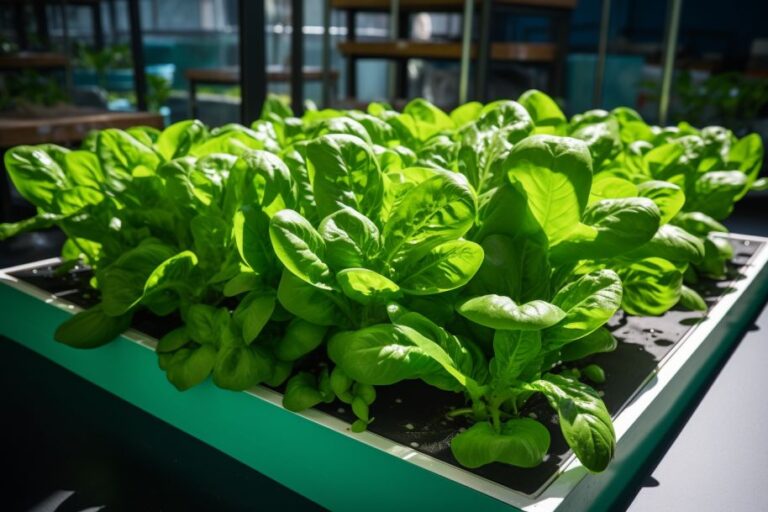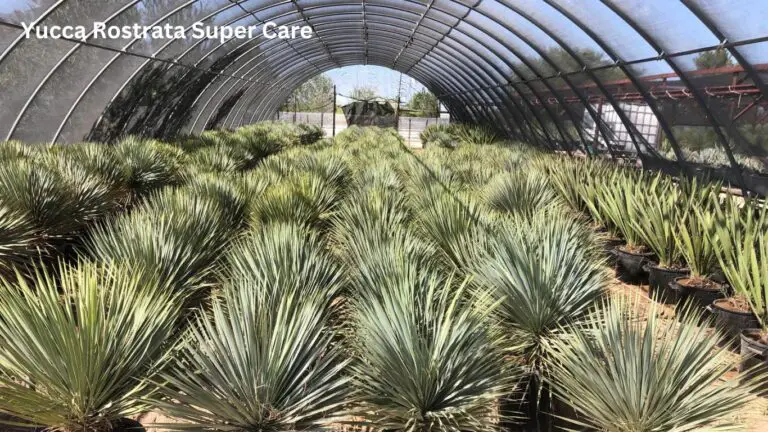Wood Chip Mulch: Everything You Need to Know Before Using It
Did you know that wood chip mulch isn’t just about aesthetics? It’s a powerhouse for your garden, offering a multitude of benefits beyond just looking pretty. Whether you’re a seasoned gardener or just dipping your toes into the world of landscaping, understanding the ins and outs of wood chip mulch can significantly elevate your gardening game.
In this comprehensive guide, we’ll delve into the depths of wood chip mulch, exploring its benefits, potential drawbacks, and how to use it effectively in your landscaping endeavors. By the end, you’ll be equipped with the knowledge to make informed decisions about incorporating wood chip mulch into your garden routine. Let’s dive in and unlock the secrets of this versatile garden ally!
Table of Contents
Understanding Wood Chip Mulch
Wood chip mulch is a popular choice among gardeners for its many benefits and versatile applications.
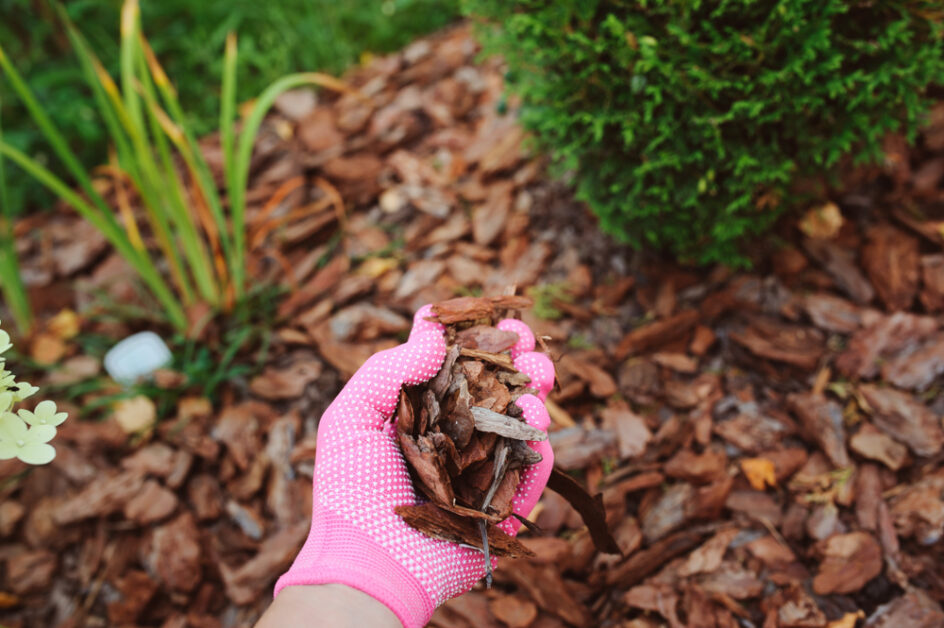
Soil Quality Improvement:
- Nutrient Release:
- Wood chip mulch breaks down gradually, releasing essential nutrients into the soil.
- Promotes healthy plant growth and vigor.
- Temperature and Moisture Regulation:
- Acts as a natural barrier, regulating soil temperature and moisture levels.
- Creates an optimal environment for plant root development.
2. Weed Suppression:
- Effective Barrier:
- Forms a dense layer that inhibits weed growth by blocking sunlight.
- Reduces competition for resources, allowing cultivated plants to thrive.
3. Sustainability and Aesthetic Appeal:
- Environmentally Friendly:
- Made from shredded or chipped wood, a renewable and biodegradable resource.
- Support eco-friendly gardening practices.
- Enhanced Appearance:
- Adds visual appeal to garden beds and landscapes.
- Creates a cohesive and well-maintained outdoor space.
By blocking sunlight from reaching the soil surface, wood chip mulch prevents weed seeds from germinating, reducing the need for frequent weeding.
Benefits of Using Wood Chip Mulch
Wood chip mulch offers numerous benefits for gardeners and landscaping enthusiasts.

- Moisture Conservation:
- Protective Layer: Wood chip mulch reduces evaporation by forming a protective barrier over the soil.
- Extended Moisture Retention: Helps soil retain moisture for longer periods, especially beneficial in dry or arid climates.
- Soil Temperature Regulation:
- Insulating Properties: Acts as an insulating layer, moderating soil temperature fluctuations.
- Summer Cooling, Winter Warming: Keeps soil cool in hot summers and provides warmth during colder months.
- Plant Health and Growth:
- Stress Reduction: Maintains stable soil moisture and temperature levels, reducing stress on plant roots.
- Optimal Growth Conditions: Ensures a conducive environment for healthy plant growth and development.
By providing a stable soil environment, wood chip mulch promotes optimal plant growth and development.
Types of Wood Chip Mulch
Wood chip mulch comes in various types, each offering unique characteristics and benefits for different gardening needs.
| Type of Wood Chip Mulch | Advantages | Disadvantages | Characteristics |
|---|---|---|---|
| Hardwood Mulch | – Slow decomposition, long-lasting | – Initially more expensive than other options | – Made from hardwood trees like oak, maple, or cherry |
| – Rich color enhances garden aesthetics | – May attract termites if not properly treated | – Provides excellent weed suppression and moisture retention | |
| Pine Bark Mulch | – Lighter weight, easier to spread | – Decomposes relatively quickly | – Made from pine tree bark, available in various sizes and textures |
| – Resists compaction, promotes soil aeration | – Can create acidic soil conditions over time | – Suitable for acid-loving plants like azaleas and rhododendrons | |
| Cedar Mulch | – Natural insect repellent properties | – Higher initial cost | – Derived from cedar trees, emits pleasant aroma and deters pests |
| – Slow decomposition, lasts longer | – May fade in color over time | – Provides effective weed control and moisture retention, ideal for landscaping | |
| Hardwood Blend Mulch | – Combination of hardwoods offers versatility | – Costlier than single-wood options | – Blend of different hardwoods, offers balanced benefits of each |
| – Long-lasting, enhances soil structure | – Quality and consistency may vary | – Provides aesthetic appeal while promoting plant health and moisture retention |
In conclusion, choosing the right type of wood chip mulch is crucial for maximizing the benefits in your garden. Understanding the characteristics and purposes of each type can help you make an informed decision and achieve optimal results.
Whether you prioritize weed suppression, moisture retention, insect repellency, or soil improvement, there is a wood chip mulch option available to suit your specific needs. By selecting the appropriate mulch for your garden, you can enhance its health and beauty while reducing maintenance and conserving water.
Review: Natural Wood Shavings for Outdoors and Indoor Bedding
Having recently incorporated Natural Wood Shavings into my gardening routine, I can attest to their versatility and effectiveness in enhancing the health and appearance of my garden beds.
One of the standout features of these wood shavings is their natural composition. Made from organic wood, they provide a sustainable and eco-friendly mulching option that aligns with my commitment to environmentally conscious gardening practices.
I used these wood shavings primarily as mulch to cover the soil surface around my plants, and the results were remarkable. Not only did they create a visually appealing finish to my garden beds, but they also served practical purposes such as weed suppression and moisture retention. I noticed a significant reduction in weed growth, which helped alleviate the need for frequent weeding sessions. Additionally, the wood shavings acted as a protective barrier, retaining moisture in the soil and reducing the frequency of watering needed, particularly during hot summer months.
Another benefit of these wood shavings is their ability to decompose over time, enriching the soil with organic matter and nutrients. This natural process contributes to the overall health of my garden soil, promoting better plant growth and vitality in the long run.
However, I did encounter a few minor drawbacks during my usage. The wood shavings decomposed relatively quickly, requiring occasional replenishment to maintain their effectiveness as mulch. Additionally, I had to be mindful of proper storage to prevent attraction to pests and maintain their quality over time.
Overall, I am highly satisfied with the performance of Natural Wood Shavings in my garden. They offer a natural and sustainable solution for mulching and soil enrichment, contributing to the health and beauty of my garden landscape. I would recommend them to fellow gardeners looking for an eco-friendly mulching option that delivers practical benefits.
- Natural Mulch: Made from organic wood, providing a sustainable mulching option for gardens.
- Weed Suppression: Helps suppress weed growth by creating a barrier over the soil surface.
- Moisture Retention: Acts as a moisture-retaining layer, reducing the need for frequent watering.
- Insulation: Provides insulation to plant roots, protecting them from temperature fluctuations.
- Soil Enrichment: Decomposes over time, enriching the soil with organic matter and nutrients.
- Aesthetic Appeal: Adds a neat and tidy appearance to garden beds and containers.
- Decomposition Rate: Wood shavings may decompose relatively quickly compared to other mulch types.
- Nutrient Depletion: High-carbon content may temporarily tie up nitrogen in the soil during decomposition.
- Attraction to Pests: Can attract pests such as termites and slugs if not properly managed.
- Flammability: Dry wood shavings are flammable and should be kept away from open flames or hot surfaces.
- Potential Contamination: Some wood shavings may contain chemical residues or allergens, depending on the source.
- Bulkiness: Large quantities of wood shavings may take up significant storage space before use.
How to Prepare the Area for Wood Chip Mulch
Preparing the area properly before applying wood chip mulch is essential to ensure its effectiveness and longevity.
Step 1: Remove Existing Vegetation
- Remove any weeds, grass, or other vegetation from the designated area.
- This can be done manually by pulling them out or using an appropriate herbicide if necessary.
Step 2: Level the Ground
- Level the ground and ensure it is free from debris, rocks, or uneven surfaces.
- This will create a smooth and even surface for the mulch to be spread onto.
Step 3: Check for Drainage Issues
- Check the area for any drainage problems or waterlogging tendencies.
- If the soil tends to become waterlogged, consider improving the drainage by adding organic matter or creating a slight slope to redirect excess water.
Step 4: Lay Down Landscape Fabric or Weed Barrier
- Lay down a landscape fabric or weed barrier over the prepared area.
- This will help suppress weed growth and act as a barrier between the soil and the wood chips.
- Cut holes in the fabric to allow for proper water penetration and root expansion.
By following these steps, you will create an optimal environment for the wood chip mulch to thrive and provide the maximum benefits for your garden or landscaping needs.
Proper Application Techniques for Wood Chip Mulch
Proper application techniques for wood chip mulch are crucial for maximizing its benefits in your garden.
Step 1: Prepare the Area
- Remove any weeds or grass from the designated area.
- Loosen the soil to ensure proper absorption of the mulch.
Step 2: Apply the Mulch
- Apply a layer of wood chip mulch that is about 2 to 4 inches thick.
- This depth provides adequate coverage to suppress weed growth, retain moisture, and regulate soil temperature.
Step 3: Maintain Proper Spacing
- Keep the mulch a few inches away from the base of plants and trees to avoid suffocating the roots.
- Leave a gap around the stems or trunks to allow for proper airflow.
- Avoid piling the mulch too high against the stems or trunks, as it can create a moist environment that promotes rot or disease.
- Create a gentle slope away from the base to allow rainwater to flow freely.
Benefits of Properly Applied Wood Chip Mulch
- Acts as a natural weed suppressant, reducing the need for herbicides and manual labor.
- Serves as a barrier, preventing soil erosion and protecting plant roots from extreme temperatures.
- Helps with moisture retention, reducing the frequency of watering and conserving water.
- Enhances the overall health and aesthetics of your garden.
In the next section, we will explore watering and irrigation considerations for wood chip mulch, and discuss how to effectively maintain its benefits over time. Stay tuned for more useful information on maximizing the use of wood chip mulch in your garden.
| Garden Setting | Proper Application Techniques for Wood Chip Mulch |
| General Mulching | Apply a layer of wood chips 2 to 4 inches deep around plants and over the soil surface. |
| Keep mulch a few inches away from the base of plants to prevent stem rot. | |
| Replenish the mulch layer as needed to maintain the desired thickness. | |
| Avoid piling mulch directly against tree trunks or plant stems. | |
| Vegetable Gardens | Apply wood chip mulch around vegetable plants to suppress weeds and retain moisture. |
| Leave space around the plant stems to prevent moisture-related diseases. | |
| Monitor for any signs of pests hiding in the mulch and take appropriate action. | |
| Tree and Shrub Beds | Extend mulch to cover the entire root zone of trees and shrubs. |
| Maintain a consistent depth to help regulate soil temperature and retain moisture. | |
| Keep mulch away from the trunk or stems to prevent issues like rot and disease. | |
| Pathways and Walkways | Apply a thicker layer of wood chips (3 to 4 inches) to create stable and weed-free paths. |
| Use a landscape fabric or cardboard underneath for additional weed control. | |
| Replenish the mulch layer periodically to maintain the desired thickness. | |
| Play Areas | Apply wood chip mulch to create a soft and impact-absorbing surface. |
| Ensure a sufficient layer thickness to provide effective cushioning. | |
| Regularly inspect for any sharp objects or hazards hidden in the mulch. | |
| Erosion Control | Use wood chips on slopes and areas prone to erosion to stabilize the soil. |
| Apply a thick layer to prevent water runoff and soil erosion. | |
| Choose larger wood chips for better anchoring on sloped surfaces. | |
| Flower Beds and Perennials | Apply a 2 to 3-inch layer of wood chips around flowers and perennials. |
| Avoid piling mulch against plant stems to prevent issues like crown rot. | |
| Reapply mulch as needed to control weeds and maintain a neat appearance. |
Watering and Irrigation Considerations for Wood Chip Mulch
Watering and irrigation considerations are crucial when using wood chip mulch in your garden. While wood chip mulch helps retain moisture in the soil, it’s important to find the right balance to avoid overwatering or under watering your plants.
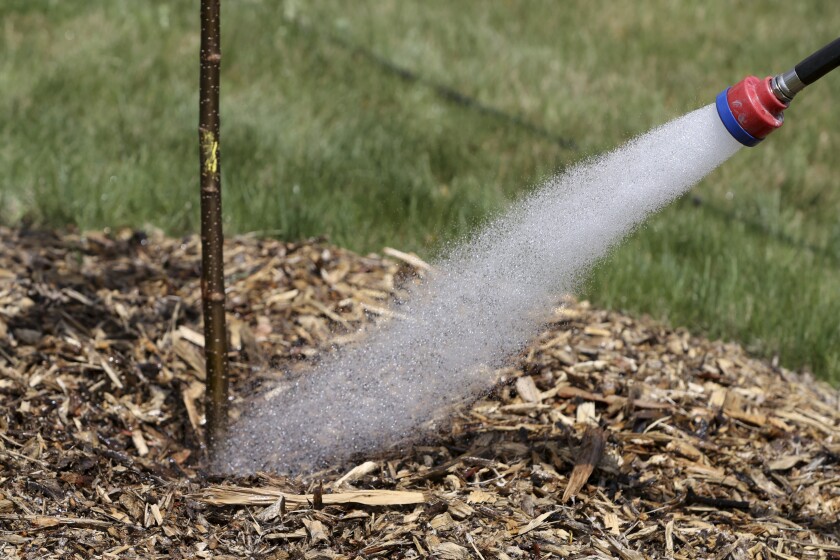
- Depth of Mulch: Finding the right depth of wood chip mulch is crucial. Too thick a layer can hinder water penetration, while too thin a layer may not retain enough moisture. Aim for a depth of 2 to 4 inches, ensuring proper water penetration and retention.
- Monitoring Moisture Levels: Regularly monitor soil moisture to ensure plants receive adequate hydration. While wood chip mulch helps retain moisture, different plants have varying water needs. Use methods like finger testing or a soil moisture meter to assess when watering is necessary
By considering these watering and irrigation factors, you can maximize the benefits of wood chip mulch while ensuring that your plants receive adequate moisture for healthy growth.
Potential Drawbacks of Wood Chip Mulch
While wood chip mulch offers numerous benefits to gardeners, there are a few potential drawbacks that should be taken into consideration.
- Nitrogen depletion: Wood chips have a high carbon to nitrogen ratio, which can lead to microbes in the soil temporarily tying up nitrogen needed for plant growth. To prevent this, add nitrogen-rich fertilizer or organic matter before applying mulch.
- Pest and disease habitat: The thick layer of wood chips can provide a favorable environment for pests like slugs, snails, and termites. Diseased wood chips can also introduce pathogens.
- To minimize risks:
- Use well-aged wood chip mulch from healthy trees
- Regularly inspect plants for signs of pests or disease
- Implement good gardening practices like proper sanitation and pest control
- While wood chip mulch has benefits, it’s important to be aware of these potential drawbacks and take steps to mitigate them for optimal plant health.
By considering these factors and taking appropriate measures, gardeners can maximize the benefits of wood chip mulch while minimizing its potential drawbacks.
Choosing the Right Wood Chip Mulch for Your Needs
Choosing the right wood chip mulch for your needs is an important step in ensuring the overall health and productivity of your garden. With so many options available, it can be overwhelming to determine which type of wood chip mulch is best suited for your specific gardening goals. However, by considering a few key factors, you can make an informed decision that will lead to optimal results.
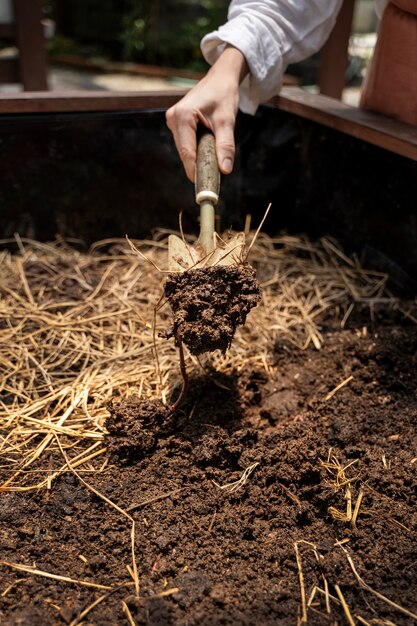
- Plant Compatibility: Consider the specific needs of your plants when choosing wood chip mulch. Some plants may benefit from mulch with higher nitrogen content, while others may require greater moisture retention. Select a wood chip mulch that aligns with the requirements of your garden plants to promote healthy growth.
- Source of Wood Chips: Ensure the wood chip mulch is free from contaminants and pesticides by opting for organic sources. Organic wood chip mulch, made from untreated and natural wood, enriches the soil as it decomposes and supports a healthy, sustainable garden environment. Choosing organic mulch provides peace of mind and promotes soil health over time.
By selecting high-quality wood chip mulch from a reputable supplier, you can ensure that your garden receives the best possible care.
Factors to Consider When Purchasing Wood Chip Mulch
When purchasing wood chip mulch, there are several factors to consider to ensure that you make the right choice for your specific needs.
If you have specific concerns about chemicals in your garden, it may be necessary to seek out organic or untreated wood chip mulch options. By considering these factors, you can make a more informed decision when purchasing wood chip mulch and ensure that you are selecting a product that meets your needs while also aligning with your values of sustainability and environmental responsibility.
Maintaining Wood Chip Mulch Over Time
Maintaining wood chip mulch is crucial for ensuring its long-term effectiveness in your garden or landscaping.

- Regularly replenish the mulch layer every 1-2 years as it breaks down and decomposes, especially in high-traffic areas or regions with heavy rainfall.
- Monitor and manually remove any weeds that emerge through the wood chip layer, as persistent weed growth can occur despite the mulch.
- Use a pre-emergent herbicide before applying fresh wood chips to further prevent weed growth and minimize manual labor for weed control.
- These maintenance practices will extend the lifespan and effectiveness of wood chip mulch in your garden or landscaping.
- Regularly replenishing the mulch and controlling weeds enhances the aesthetic appeal of your outdoor space and provides ongoing benefits like moisture retention, temperature regulation, and weed suppression.
So, be sure to set aside time periodically to assess the condition of your wood chip mulch and take the necessary steps to maintain its health and effectiveness.
Review: Andersons Barricade Granular Pre-Emergent Herbicide
Having recently utilized Andersons Barricade Granular Pre-Emergent Herbicide in my lawn care regimen, I can confidently say that it’s been a game-changer in my battle against weeds.
One of the standout features of this herbicide is its effectiveness in preventing weed germination before it even becomes a problem. I applied it before mulching my garden beds, and the results were remarkable. Not only did it halt the emergence of new weeds, but it also significantly reduced the need for manual weeding and maintenance, saving me valuable time and effort in the long run.
I appreciated the versatility of this product, as it can be safely used on a variety of turf and ornamental landscapes without causing harm to established plants. The granular form made application a breeze, allowing for even coverage with a spreader. Plus, its weather-resistant formula ensured that it remained effective even after rainfall or irrigation, providing long-lasting protection against weed infestation.
While I encountered some concerns about its persistence in the soil and potential environmental impact, I found that careful application and adherence to usage guidelines mitigated these risks effectively. Additionally, the initial investment was justified by the significant reduction in weed control labor and costs over time.
Overall, Andersons Barricade Granular Pre-Emergent Herbicide has proven to be an invaluable tool in my lawn care arsenal. It’s a reliable solution for preventing weed growth before it starts, allowing me to maintain a pristine and weed-free landscape with minimal effort. I highly recommend it to fellow homeowners and gardeners looking for an effective and convenient weed control solution.
✅ Long-lasting Protection: Provides extended control, reducing the need for frequent reapplication.
✅ Versatile Application: Suitable for use on a wide range of turf and ornamental landscapes.
✅ Safe for Established Plants: Can be applied around existing plants without causing harm.
✅ Easy to Apply: Granular form allows for straightforward application with spreaders.
✅ Weather Resistant: Resists breakdown from rainfall or irrigation, maintaining effectiveness over time.
❌ Limited Post-Emergent Control: Primarily effective against pre-emergent weeds, may not control existing weed growth.
❌ Persistence in Soil: Residual effects may affect the establishment of desired plants or seeds if not used cautiously.
❌ Potential Environmental Impact: Use may have unintended consequences for non-target organisms or water sources.
❌ Risk of Overapplication: Excessive use can lead to damage to surrounding vegetation or unintended runoff.
❌ Cost: Higher initial investment compared to some other weed control methods, although long-term savings may outweigh this.
Understanding the Decomposition Process of Wood Chip Mulch
Understanding the decomposition process of wood chip mulch is crucial for gardeners looking to effectively utilize this organic material. As wood chips break down, they undergo a series of biological and chemical transformations that contribute to the overall health and fertility of the soil.
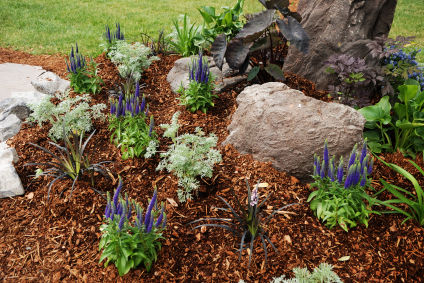
Step 1: Carbon-to-Nitrogen Ratio (C:N Ratio)
- Wood chips have a high carbon content, leading to a high C:N ratio.
- Microbes breaking down wood chips require nitrogen for decomposition.
- High C:N ratios in fresh wood chips can deplete nitrogen from the soil, potentially causing nitrogen deficiency in plants.
Step 2: Decomposition Process
- As wood chips age and decompose, the C:N ratio decreases, making nutrients more available to plants over time.
Step 3: Additional Factors in Decomposition
- Moisture levels are crucial for microbial activity and effective decomposition.
- Optimum temperature range of 50 to 70 degrees Fahrenheit (10 to 25 degrees Celsius) promotes microbial activity.
- Proper aeration of the mulch pile provides sufficient oxygen for aerobic microorganisms to function optimally.
By understanding and managing these factors, you can optimize the decomposition process of wood chip mulch, ensuring nutrient availability for plant growth and overall effectiveness of the mulching process.
Using Wood Chip Mulch in Different Garden Areas
Using wood chip mulch in different garden areas can be highly beneficial for your plants and the overall health of your garden.
- Vegetable Gardens:
- Retains soil moisture, reducing the need for frequent watering.
- Suppresses weed growth, minimizing competition for nutrients and space.
- Insulates roots, protecting them from temperature fluctuations and promoting healthy growth.
- Flower Beds:
- Enhances aesthetic appeal while providing moisture retention benefits.
- Acts as a natural weed barrier, reducing the need for manual weeding.
- Supports healthy flower growth and blooming by maintaining optimal soil moisture levels.
- Around Trees and Shrubs:
- Helps maintain soil moisture and regulate temperature around the roots.
- Acts as a protective barrier against equipment damage, such as lawn mowers.
- Promotes healthy root development and overall plant vigor.
- Application and Maintenance:
- Apply a 2-4 inch layer of mulch evenly, avoiding piling against plant stems or trunks.
- Extend the mulch several inches beyond the plant’s drip line to ensure adequate coverage.
- Regularly monitor and replenish mulch as needed to maintain proper thickness and maximize benefits.
Using wood chip mulch in different garden areas has several advantages, from improved moisture retention and weed suppression to temperature regulation and protection against equipment damage. By understanding the specific needs of each garden area and applying the mulch appropriately, you can create an environment that promotes optimal plant growth and vitality.
How to Calculate the Amount of Wood Chip Mulch Needed
When it comes to calculating the amount of wood chip mulch needed for your garden, it is important to consider several factors. The first step is to measure the area that you plan to cover with mulch. This can be done by multiplying the length and width of the area in feet.
- Determine the desired depth of the mulch: The recommended depth for wood chip mulch is typically around 2 to 4 inches. To convert this depth into a fraction of a foot, divide it by 12. For example, a depth of 3 inches would be equivalent to 0.25 feet.
- Calculate the amount of wood chip mulch needed: Multiply the area measurement by the desired depth. For instance, if the area to be covered is 100 square feet and the desired depth is 0.25 feet, you would multiply 100 by 0.25 to get 25 cubic feet of wood chip mulch needed.
- It is advisable to add a little extra mulch to account for any settling or unevenness in application.
By following these steps, you can accurately calculate the amount of wood chip mulch required for your landscaping or gardening project.
Common Mistakes to Avoid When Using Wood Chip Mulch
While wood chip mulch offers numerous benefits for gardens and landscaping, there are some common mistakes that gardeners should avoid to ensure optimal results.
- Avoid Applying Mulch Too Thickly:
- Mulch should act as a protective layer, not bury plants. Applying a thick layer can suffocate plants by blocking air and water from reaching the roots.
- Aim for a layer of mulch that is 2-4 inches thick, which is generally sufficient for most plants.
- Prevent Mulch from Touching Plant Stems or Trunks:
- Piling mulch against stems or trunks can create a moist environment, leading to fungal diseases and potential rot.
- Leave a small space around the base of plants to allow for airflow and prevent direct contact between mulch and plants.
- Be Cautious with Fresh Wood Chips:
- Fresh wood chips can rob the soil of nitrogen during decomposition, causing nutrient deficiencies for plants.
- Allow fresh wood chips to age and decompose for several months before using them as mulch to minimize nitrogen depletion.
- Seek Expert Advice:
- Every garden is unique, and specific considerations should be taken into account when using wood chip mulch.
- Consult with a local gardening expert or horticulturist for personalized advice based on your garden’s specific needs and conditions.
The table explain different kind of mistake you make when using wood chip mulch:
| Common Mistakes | Description |
| Piling Mulch Against Plants | Avoid creating mulch volcanoes around the base of trees and plants. This can lead to stem rot and other diseases. |
| Excessive Mulch Thickness | Applying a very thick layer of mulch can prevent water penetration and air circulation, potentially harming plant roots. |
| Neglecting Weed Control | Failure to control weeds before applying mulch can result in an increased weed problem underneath the wood chips. |
| Ignoring Mulch Decomposition | Not considering the decomposition rate of wood chips may lead to the need for more frequent replenishing and maintenance. |
| Using Uncomposted Wood Chips | Fresh wood chips can temporarily tie up nitrogen in the soil during decomposition. Composting them before use can mitigate this issue. |
| Choosing Contaminated Mulch | Failing to ensure that the wood chips are free from contaminants like pesticides or herbicides may harm plants and soil health. |
| Using Inappropriate Wood Types | Selecting the wrong type of wood (e.g., black walnut) can release substances harmful to certain plants (allelopathy) or affect soil pH. |
| Neglecting Soil Moisture Levels | Allowing the wood chips to become excessively dry or waterlogged can impact plant health and create an environment conducive to pests or diseases. |
| Not Considering Mulch Color | Dark-colored mulches may absorb more sunlight, potentially raising soil temperatures. Consider the impact on heat-sensitive plants. |
| Ignoring Sustainability | Choosing mulch from unsustainable sources may contribute to deforestation and other environmental issues. Opt for sustainably sourced options. |
| Neglecting Mulch Edges | Forgetting to extend mulch to cover the entire root zone of plants, especially in tree and shrub beds, reduces the effectiveness of mulching. |
| Skipping Soil Amendments | Relying solely on wood chip mulch without addressing soil deficiencies or imbalances may limit the overall health and growth of plants. |
| Applying Mulch Too Early | Applying mulch too early in spring may inhibit soil warming, delaying the growth of plants. Wait until the soil warms up before mulching. |
| Overlooking Mulch Quality | Choosing low-quality or improperly processed wood chips may introduce pests, diseases, or unwanted contaminants into the garden. |
| Neglecting Regular Inspection | Failing to inspect the mulch regularly for signs of pests, diseases, or the need for replenishment can lead to problems going unnoticed until they escalate |
For Further information watch the video given below:
FAQ
Can wood chip mulch attract pests to my garden?
While wood chip mulch can provide a habitat for pests such as termites and slugs, proper application and maintenance can help minimize this risk. Avoid placing mulch directly against the trunks of plants and regularly inspect the mulch for signs of pest activity.
Is it necessary to remove old wood chip mulch before applying a new layer?
It is not necessary to remove old wood chip mulch before adding a new layer, as the decomposition process will naturally break down the older mulch over time. However, it is recommended to periodically fluff and turn the wood chip mulch to aid in decomposition and prevent compaction.
Can wood chip mulch cause nitrogen deficiency in plants?
Wood chip mulch can temporarily tie up nitrogen in the soil as it decomposes, potentially leading to nitrogen deficiency in plants. To mitigate this, you can add a nitrogen-rich fertilizer or incorporate nitrogen-fixing plants into your garden bed.
Will wood chip mulch change the pH level of my soil?
Depending on the type of wood used in the mulch, it can slightly alter the pH level of the soil over time. Generally, wood chip mulch has a slightly acidic effect on the soil, which may benefit acid-loving plants. Regular monitoring of soil pH is recommended for optimal plant health.
Can wood chip mulch cause root rot in plants?
When applied incorrectly, excessive amounts of wood chip mulch can lead to root rot in plants. It is crucial to avoid piling mulch against the trunks of plants, as this can create excess moisture and suffocate the roots. Maintain a proper mulch depth and keep the mulch pulled back from the stems of plants.
Are all types of wood suitable for use as mulch?
Not all types of wood are suitable for use as mulch. Avoid using mulch made from cedar, cypress, or black walnut, as they can contain natural chemicals that inhibit plant growth. It is best to use wood chip mulch made from hardwoods or fruit trees.
Can wood chip mulch cause a fire hazard?
Wood chip mulch can be combustible if not properly maintained. Avoid placing mulch near heat sources or open flames and regularly monitor the moisture content of the mulch to reduce the risk of fire.
Can I use wood chip mulch in vegetable gardens?
Wood chip mulch can be used in vegetable gardens, but it is important to keep it away from direct contact with the plant stems. This helps prevent moisture buildup and potential rot. Additionally, avoid using mulch from chemically treated or painted wood in vegetable gardens.

Studied Agricultural Engineering-Plant Protection at University of California, Davis.
Head of Content writing team at Southelmontehydroponics.com

